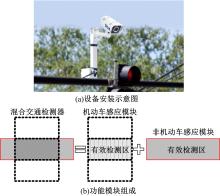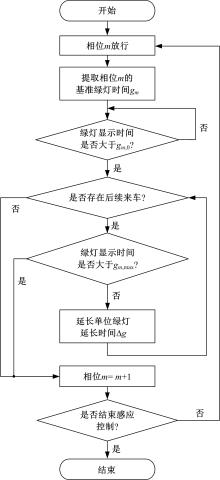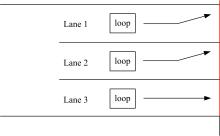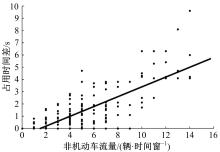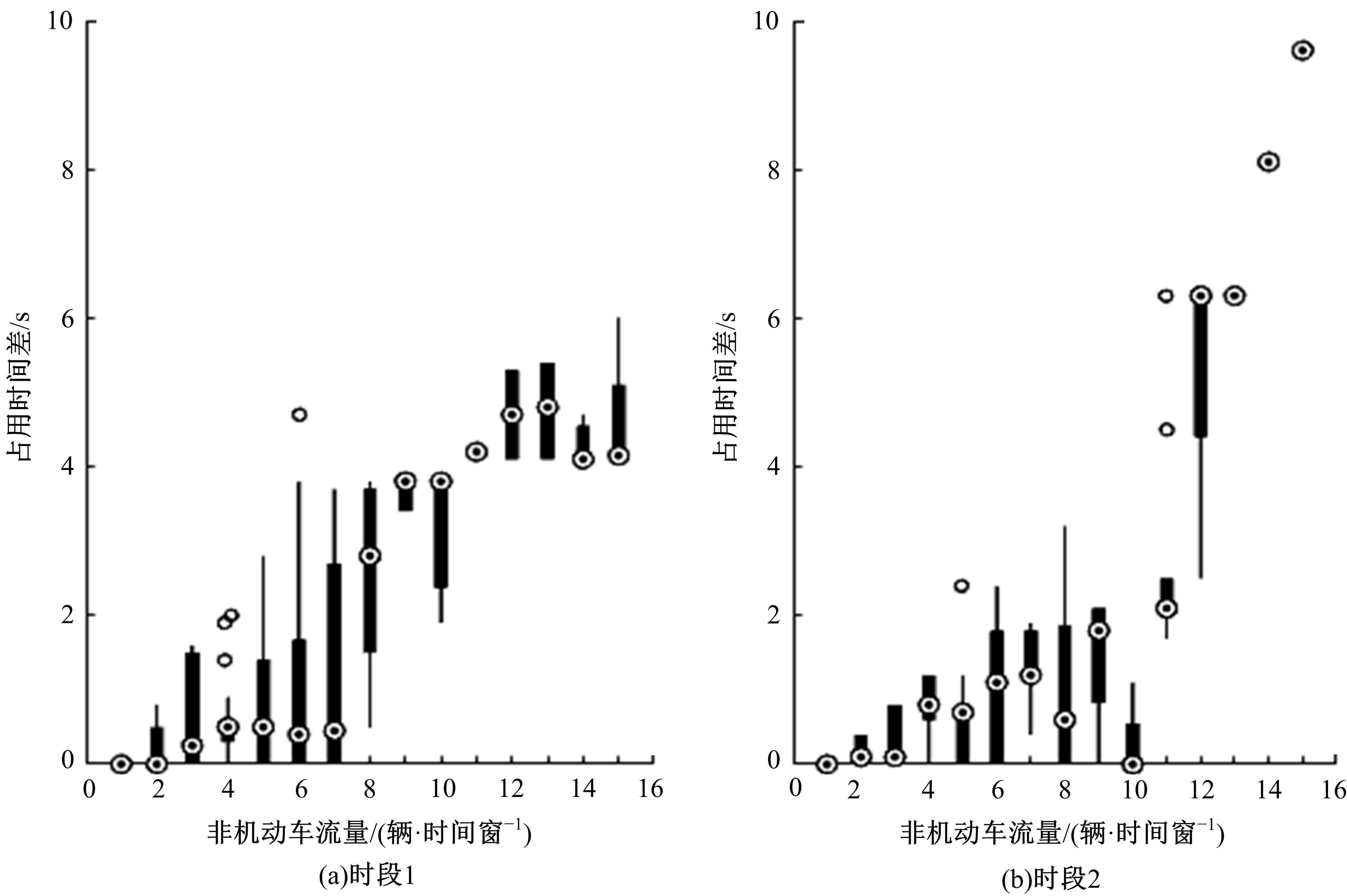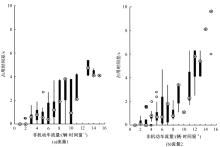Journal of Jilin University(Engineering and Technology Edition) ›› 2019, Vol. 49 ›› Issue (3): 695-704.doi: 10.13229/j.cnki.jdxbgxb20180152
Previous Articles Next Articles
Traffic signal actuated control at isolated intersections for heterogeneous traffic
Xiao⁃qin LUO( ),Dian⁃hai WANG(
),Dian⁃hai WANG( ),Sheng JIN
),Sheng JIN
- College of Civil Engineering and Architecture, Zhejiang University, Hangzhou 310058, China
CLC Number:
- U491
| 1 | 李显生,孟凡淞,郑雪莲,等. 交通冲突类型对驾驶人生理特性的影响[J]. 浙江大学学报:工学版,2017,51(9):1720⁃1726. |
| LiXian⁃sheng,MengFan⁃song,ZhengXue⁃lian,et al. Influence of traffic types on drivers’s physiological characteristics[J]. Journal of Zhejiang University(Engineering Science),2017,51(9):1720⁃1726. | |
| 2 | 刘泓,王慧,沈逢春. 基于混合交通流下的交叉口延误[J]. 吉林大学学报:工学版, 2011, 41(增刊1): 72⁃75. |
| LiuHong,WangHui,ShenFeng⁃chun. Traffic delay for mixed⁃traffic flow at intersections[J]. Journal of Jilin University(Engineering and Technology Edition),2011,41(Sup.1):72⁃75. | |
| 3 | 梁春岩,王春光,沈战,等. 机非混行交叉口右转机动车行程时间计算方法[J]. 吉林大学学报:工学版,2007,37(5):1053⁃1057. |
| LiangChun⁃yan,WangChun⁃guang,ShenZhan,et al. Calculation method of travel time of right⁃turn vehicle at motor⁃and⁃nonmotor⁃vehicle mixed traffic intersection[J]. Journal of Jilin University(Engineering and Technology Edition),2007,37(5):1053⁃1057. | |
| 4 | MallikarjunaC,RaoK R. Heterogeneous traffic flow modelling: a complete methodology[J]. Transportmetrica,2011,7(5):321⁃345. |
| 5 | RadhakrishnanS,RamaduraiG. Discharge headway model for heterogeneous traffic conditions[J]. Transportation Research Procedia,2015,10:145⁃154. |
| 6 | RenG,JiangH,ChenJ X,et al. Heterogeneous cellular automata model for straight⁃through bicycle traffic at signalized intersection[J]. Physica A—Statistical Mechanics and its Applications,2016,451:70⁃83. |
| 7 | LuoY,JiaB,LiuJ,et al. Modeling the interactions between car and bicycle in heterogeneous traffic[J]. Journal of Advanced Transportation,2015,49(1):29⁃47. |
| 8 | ChenQ,WangY. A cellular automata (CA) model for motorized vehicle flows influenced by bicycles along the roadside[J]. Journal of Advanced Transportation,2016,50(6):949⁃966. |
| 9 | 魏丽英,吕凯. 信号交叉口处自行车交通流的跟驰行为[J]. 吉林大学学报:工学版,2008,38(1):53⁃56. |
| WeiLi⁃ying,KaiLü . Bicycle following behavior at signalized intersection[J]. Journal of Jilin University(Engineering and Technology Edition),2008,38(1):53⁃56. | |
| 10 | WangD,FengT,LiangC. Research on bicycle conversion factors[J]. Transportation Research Part A—Policy and Practice,2008,42(8):1129⁃1139. |
| 11 | 徐程,曲昭伟,王殿海,等. 混合自行车交通流速度分布模型[J]. 浙江大学学报:工学版,2017,51(7):1331⁃1338. |
| XuCheng,QuZhao⁃wei,WangDian⁃hai, et al. Speed distribution for heterogeneous bicycle traffic flow[J]. Journal of Zhejiang University(Engineering Science),2017,51(7):1331⁃1338. | |
| 12 | JinS,QuX B,ZhouD,et al. Estimating cycleway capacity and bicycle equivalent unit for electric bicycles[J]. Transportation Research Part A—Policy and Practice,2015,77:225⁃248. |
| 13 | QiaoJ G,HuP,YuD. Optimization of signal timing for the mixed traffic flow in VISSIM simulation environment[J]. Applied Mechanics and Materials,2013,253⁃255:1726⁃1730. |
| 14 | 姚荣涵,刘美妮,徐洪峰. 信号控制交叉口车均延误模型适用性分析[J]. 吉林大学学报:工学版,2016,46(2):390⁃398. |
| YaoRong⁃han,LiuMei⁃ni,XuHong⁃feng. Applicability studies of vehicle delay models for isolated signalized intersections[J]. Journal of Jilin University(Engineering and Technology Edition),2016,46(2):390⁃398. | |
| 15 | 王殿海,金盛,宋现敏,等. 城市混合交通控制设计理念与方法[J]. 城市交通,2008,6(2):16⁃22. |
| WangDian⁃hai,JinSheng,SongXian⁃ming,et al. Ideas and methods for fixed urban traffic control[J]. Urban Transport of China,2008,6(2):16⁃22. | |
| 16 | 邵锋,查伟雄. 基于单路口感应控制系统的单位绿灯延时研究[J]. 华东交通大学学报,2008,25(1):37⁃40. |
| ShaoFeng,ZhaWei⁃xiong. Research on extension green time based on actuated⁃control system for isolated intersection[J]. Journal of East China Jiaotong University,2008,25(1):37⁃40. | |
| 17 | ZhangG H,WangY H. Optimizing minimum and maximum green time settings for traffic actuated control at isolated intersections[J]. IEEE Transactions on Intelligent Transportation Systems,2011,12(1):164⁃173. |
| 18 | 栗红强. 城市交通控制信号配时参数优化方法研究[D]. 长春:吉林大学交通学院,2004. |
| LiHong⁃qiang. Study on the optimization methods of signal timing parameters of urban traffic control[D]. Changchun: College of Transportation,Jilin University,2004. |
| [1] | Zhi⁃hui LI,Tao ZHONG,Yong⁃hua ZHAO,Yong⁃li HU,Hai⁃tao LI,Jing⁃wei ZHAO. Pedestrian tracking algorithm for autonomous driving [J]. Journal of Jilin University(Engineering and Technology Edition), 2019, 49(3): 680-687. |
| [2] | QU Da-yi,YANG Jing-ru,BING Qi-chun,WANG Wu-lin,ZHOU Jing-chun. Arterial traffic offset optimization based on queue characteristics at adjacent intersections [J]. Journal of Jilin University(Engineering and Technology Edition), 2018, 48(6): 1685-1693. |
| [3] | LI Zhi-hui, HU Yong-li, ZHAO Yong-hua, MA Jia-lei, LI Hai-tao, ZHONG Tao, YANG Shao-hui. Locating moving pedestrian from running vehicle [J]. 吉林大学学报(工学版), 2018, 48(3): 694-703. |
| [4] | SHAO Sai, BI Jun, GUAN Wei. Electric vehicle routing problem with charging and dynamic customer demands [J]. 吉林大学学报(工学版), 2017, 47(6): 1688-1695. |
| [5] | SUN Zong-yuan, FANG Shou-en. Hierarchical clustering algorithm of moving vehicle trajectories in entrances and exits freeway [J]. 吉林大学学报(工学版), 2017, 47(6): 1696-1702. |
| [6] | ZHANG Zhe, JIA Li-min, QIN Yong, YUN Ting. Equalization-based feedback control model of pedestrian counter flow [J]. 吉林大学学报(工学版), 2017, 47(6): 1728-1737. |
| [7] | LI Zhi-hui, WANG Kun-wei, SONG Xian-min, LIU Xin-shan, SHEN Yao, LUO Rui-qi. Roundabout travel time prediction based on characteristics of lane choosing [J]. 吉林大学学报(工学版), 2017, 47(5): 1411-1419. |
| [8] | LI Xian-sheng, MENG Fan-song, ZHENG Xuan-lian, REN Yuan-yuan, YAN Jia-hui. Driver's visual characteristics based on stress response [J]. 吉林大学学报(工学版), 2017, 47(5): 1403-1410. |
| [9] | LI Ye, WANG Wei, XING Lu, WANG Hao, DONG Chang-yin. Improving traffic efficiency of highway by integration of adaptive cruise control and variable speed limit control [J]. 吉林大学学报(工学版), 2017, 47(5): 1420-1425. |
| [10] | WAN Ping, WU Chao-zhong, LIN Ying-zi, MA Xiao-feng. Driving anger detection based on multivariate time series features of driving behavior [J]. 吉林大学学报(工学版), 2017, 47(5): 1426-1435. |
| [11] | YAO Rong-han, ZHANG Xiao-tong, LIAN Lian. Optimization model for controlling reversible approach lanes at signalized intersections [J]. 吉林大学学报(工学版), 2017, 47(4): 1048-1054. |
| [12] | JIANG Pan, YANG Jia-qi, FANG Rui-wei. Bi-level programming model for optimization of urban agglomeration comprehensive transportation corridor layout [J]. 吉林大学学报(工学版), 2017, 47(4): 1061-1067. |
| [13] | WANG Lei, LIU Zhao, LIU Yang. Shift quality evaluation based on human response spectrum analysis [J]. 吉林大学学报(工学版), 2017, 47(3): 725-730. |
| [14] | ZHAO Xue-yu, YANG Jia-qi, PENG Ya-mei. Competitive and cooperative relationship evolution mechanism between urban rail transit and traditional bus [J]. 吉林大学学报(工学版), 2017, 47(3): 756-764. |
| [15] | QU Da-yi, WAN Meng-fei, LI Juan, WANG Jin-zhan, XU Xiang-hua. Offset optimization of arterial traffic based on traffic-wave theory and it control method [J]. 吉林大学学报(工学版), 2017, 47(2): 429-437. |
|
||
